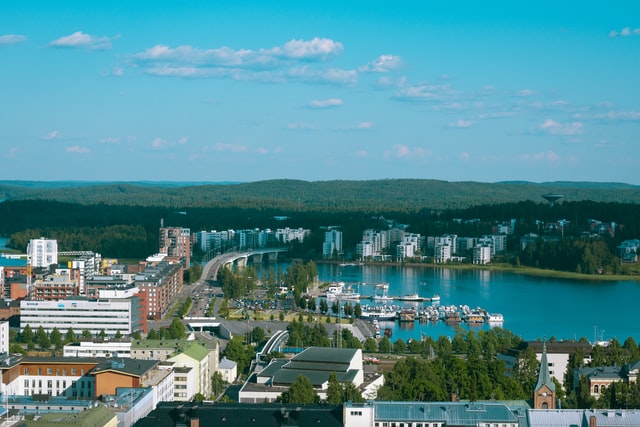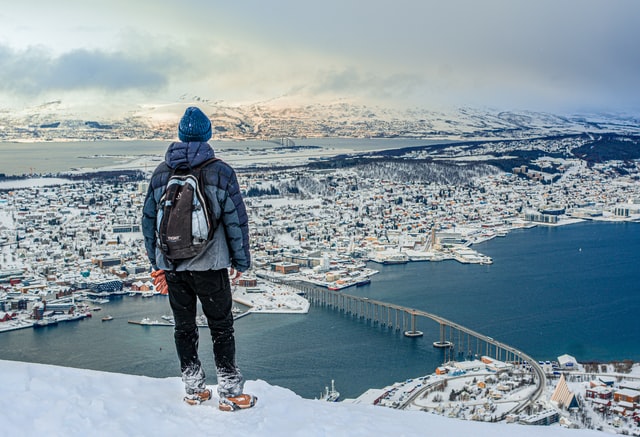Bryggen: Norway’s World Heritage Site that prospered under the Hanseatic League
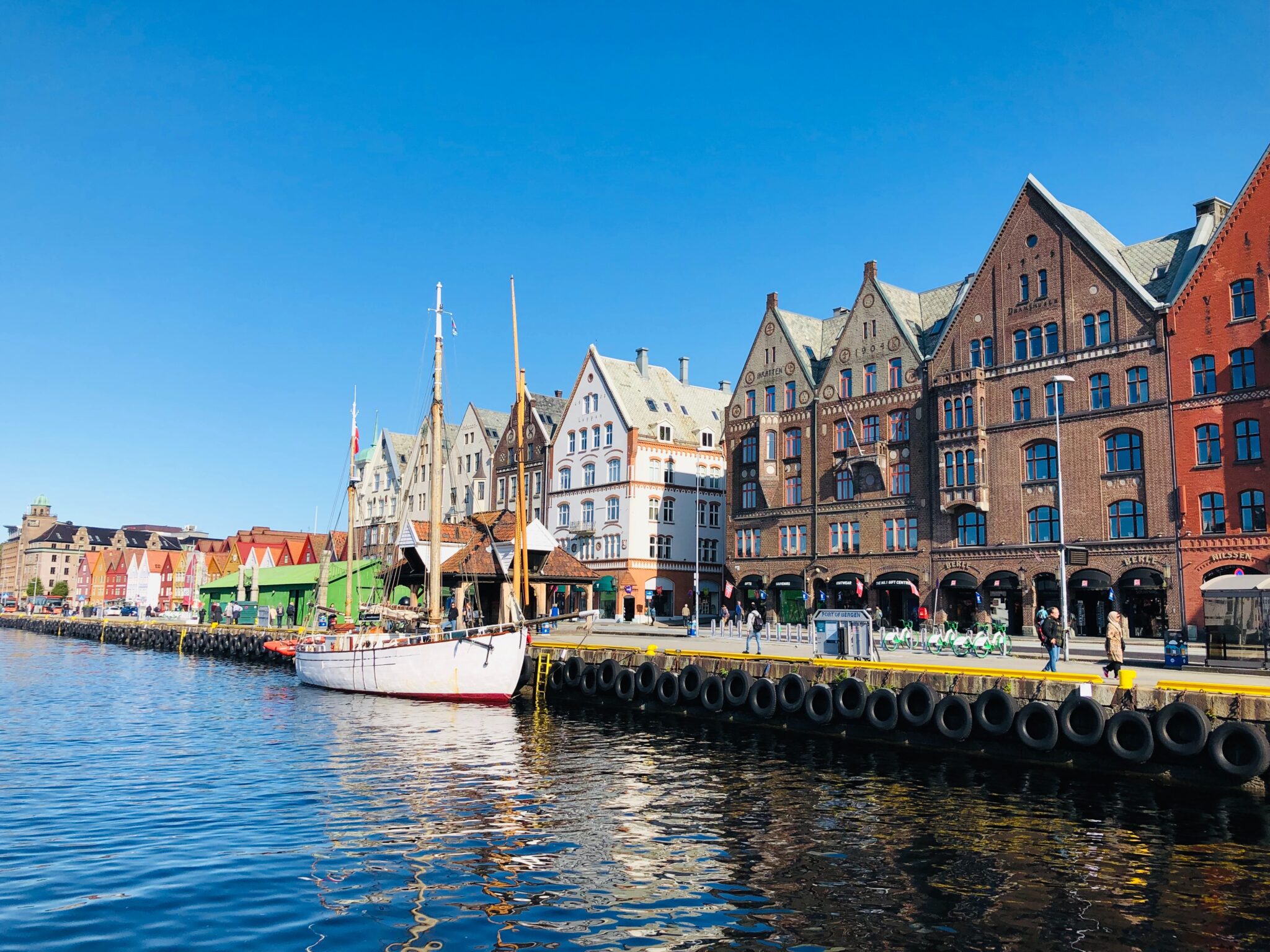
Within Bergen, Norway’s second largest city, there is an area called Bryggen. Bergen has a history of participation in the Hanseatic League, which was formed during the Middle Ages, and Bryggen was established as a result of the Hanseatic League.
In this article, I will focus on Bryggen’s Bryggen district and introduce the historical background of the area’s establishment and famous spots. If you are interested in Norwegian and European history, or if you are planning to visit Norway, please read this article for reference.
What is Bryggen in Norway?

On the west coast of Norway lies the city of Bergen, the second largest city in Norway after the capital Oslo. Bergen was founded in 1070 by King Olaf of Norway. It is a historic port city in Norway, having been the capital of Norway between 1217 and 1299.
And Bryggen is a wooden house district in a corner of Bergen that was used by German merchants of the Hanseatic League. Bergen joined the Hanseatic League in the 14th century, an alliance of cities originating in northern Germany that aimed to expand the economic sphere.
As one of the four major centers of the Hanseatic League, Bergen was visited by numerous German merchants of the Hanseatic League at that time. Bergen became a trading center for imports and exports of goods to European countries.
Bryggen was also built by German merchants as a residential area after Bergen joined the Hanseatic League. The many colorful buildings that line the harbor are very attractive. The name of the district, Bryggen, means “wharf” in Norwegian.
In 1979, Bryggen was registered as a UNESCO World Heritage Site in recognition of the historical value of its beautiful traditional Hanseatic houses and warehouses.
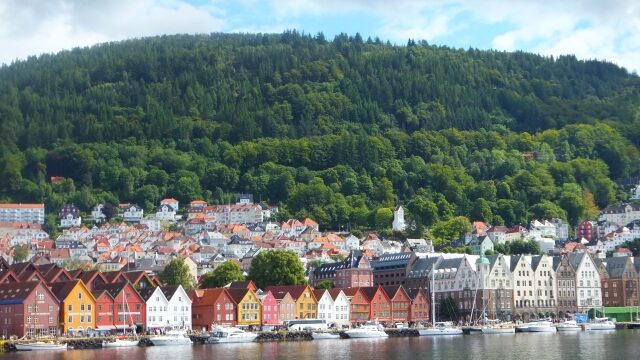
Former residential area of German merchants
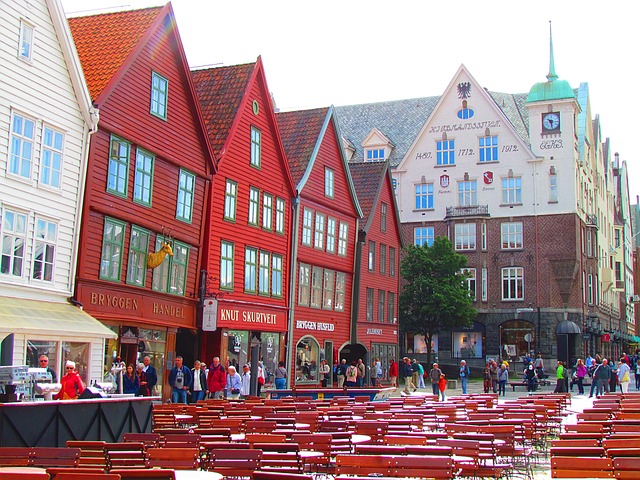
The Bryggen area of Bergen was originally created as a residential area by German merchants who came to Bergen during the Hanseatic League. At that time, Bergen was a trading center for Norwegian dried cod to facilitate trade with European countries.
The merchants of the Hanseatic League stayed in Bergen for long periods of time for business, and a section of Bergen was developed as a residential area to serve as a base for their daily lives. They developed the city of Bergen by building accommodations, offices, warehouses to store their goods, and other facilities while conducting their trading business in Bergen.
In addition to Bergen, Norway, German merchants of the Hanseatic League established trading posts in London, Russia, and Belgium. Of these, Bryggen is the best-preserved and most important historical spot, and it has retained the atmosphere of those days.
Origin and purpose of the Hanseatic League
The “Hanseatic League” is often mentioned in the introduction to Bergen and Bryggen. The Hanseatic League is an essential part of the history of Bryggen. In this section I would like to focus on the Hanseatic League.
In a nutshell, the Hanseatic League was a city alliance of merchant cities throughout northern Germany that joined hands to form and expand a special economic zone in Europe. In addition to expanding sales channels, the goal was to strengthen the merchants’ influence over the state and the various tribes by uniting them with each other. This point has some similarities to today’s labor unions.
The Hanseatic League was born in the 12th century in medieval Europe, beginning in the German city of Lübeck. The number of member cities gradually increased, and at its peak in the 14th century, there were more than 100 known member cities, and according to one theory, as many as 200 European cities. In the 17th century, the Hanseatic League came to an end with the establishment of sovereign states in Europe. Thus, the Hanseatic League, which dominated a large economic zone in Europe for a long period from the 12th to 17th centuries, is a very important alliance in European history.
By the way, in contrast to the Hanseatic League, the Kalmar Union, which was formed at the end of the 14th century, was a three-nation alliance of Denmark, Sweden, and Norway in Nordic countries. The background is that in the 14th century, the Hanseatic League’s influence extended to the Baltic Sea and the Nordic countries, posing a major threat to the Nordic economies. This is how the rivalry structure of the Hanseatic League vs. the Kalmar Union of Nordic countries came to be, and you can read more about how it went down in the following article.
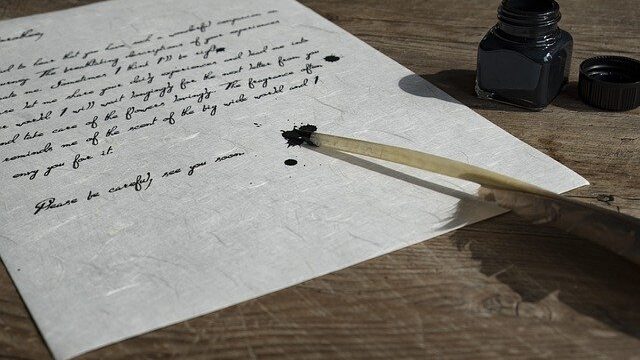
Dried cod and other seafood are traded goods

During the Hanseatic League period, the Bryggen district of Bergen was used as a trading base for maritime trade with the rest of Europe. The main trade goods at that time were marine products, especially dried cod, which has been produced in Bergen for a long time.
Even before joining the Hanseatic League, Bergen was one of the largest trading centers in Scandinavia, specializing in dried cod. In addition to being blessed with rich fishing grounds in the waters around Norway, the warm currents flowing through the Bergen area made it a rare ice-free port in Northern Europe.
Bergen’s seafood was also valued by the Hanseatic League and became a popular commodity exported throughout Europe. At that time, a large amount of dried cod was stored in warehouses in Bryggen.
Colorful wooden houses in Bryggen

Bryggen is characterized by the colorful wooden buildings that line the streets along the sea. The gabled, triangular roofs and yellow and red painted houses look like something out of a picture book. There are many theories as to why the colorful exteriors of the buildings were painted. One theory is that the merchants used the garish colors as a marker to make it easier to identify where they were staying.
On the other hand, fire is one of the drawbacks of wooden buildings, and houses in Bryggen have burned down many times in their history. The area was restored and rebuilt after each fire, and even after the great fire of 1702, which is said to have destroyed 90% of the district, the area recovered successfully. Many of the buildings that stand today in Bryggen were constructed after the 1702 fire.
The wooden houses in Bryggen, listed as a World Heritage Site, were used as living quarters and warehouses for storing trade goods at the time. These buildings are still in use today. Restaurants, stores, and workshops are still as bright and lively as they were when the Hanseatic League flourished and traded goods. Bergen is also home to the Hanseatic League Museum, which provides detailed information about the Hanseatic League, including the work and lifestyle of the merchants of the time.
There is also the Bryggen Museum, which displays Bergen’s history as a maritime trading town, including its traditional architecture and furnishings. If you want to learn more about Bergen and the Bryggen area, you should definitely stop by.
Conclusion
Bryggen was one of the main centers of the Hanseatic League, which established a huge economic zone in northern Germany. German merchants of the Hanseatic League traded Norwegian seafood and other goods to European countries through Bryggen.
Today, the colorful wooden buildings from the Middle Ages still remain as they were in those days, and many tourists visit the area every year to catch a glimpse of them.


